It’s Not Just for Drinking Anymore — 5 Tea Recipes For Cooking With Tea
People in China’s Yunnan Province began drinking tea during the Shang Dynasty, more than 2000 years ago. At first, they used tea as medicine.
But before having the bright idea to pour hot water over tea leaves and sip the beverage, people in the same region used tea leaves in cooking. Just as we use herbs like cilantro, basil and rosemary today, Chinese used tea leaves, shoots and buds.
Once tea became widely known as a beverage, its culinary uses declined. Cooks in China do still use tea leaves in different regional (and not widely seen in the United States) recipes. One Chinese treat you might encounter: hard-boiled eggs steeped in a tea-infused liquid. Meanwhile a Burmese dish of fermented tea leaves called laphet has also become popular in US cities with Burmese restaurants. It’s fabulous, and available along the Front Range at Urban Burma in Aurora.
As we covered last week, bartenders are incorporating tea into cocktails and punches. And now tea’s disconnect from the world of kitchens, too, is beginning to seem like history. Chefs around the world are turning to variations of Camellia sinensis, as well as herbal teas, for culinary inspiration.
As we enter what for many of us is the High Season for cooking, we offer a guide for how to use teas to enrich and invigorate meals, from appetizers to main courses to desserts.
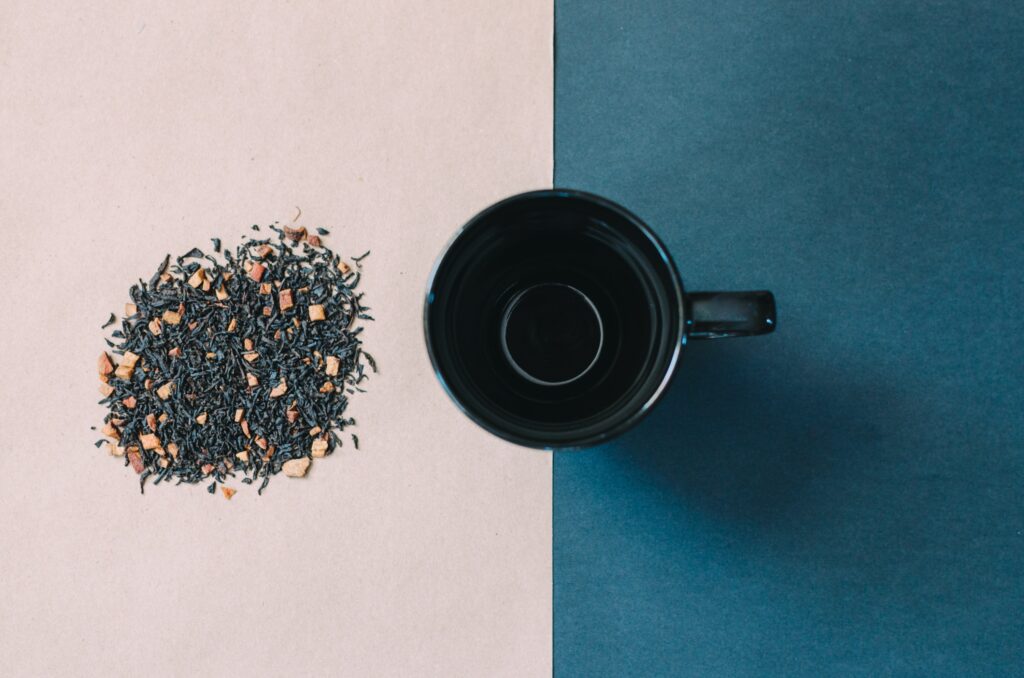
Tips for Cooking With Tea
Ditch tea bags. Whole leaf teas are by far the best option. They permit better control of tea volume, and always are much better teas than those found in dusty old tea bags.
Consider using a grinder. You won’t need to grind tea leaves for wet marinades, but many recipes use tea in dry rubs, for things like beef and pork. For rubs, you want those tea leaves pulverized.
Pay close attention to steep times. Tea is naturally bitter. When steeped properly, a delectable sweetness balances tea’s bitterness. Tea’s dance between bitter and sweet, in fact, serves as the inspiration for our name. In Chinese, Ku Cha means “bitter tea.” Without its bite, tea would taste insipid. But if steeped too long, teas from Camellia sinensis (the bush that offers us all of the world’s traditional teas) grow unpleasantly bitter. Make sure the brewed tea itself is balanced before using it in dishes.
Power matters. While we seek proper balance in tea through the duration of the leaves steep in hot water, we also seek extra oomph when cooking with tea. The trick is not brewing it for extra time, as that can turn the entire batch bitter. Instead, it relies on volume. If the cup of tea you normally make requires one teaspoon, the same amount of liquid in a marinade might work better with two or three teaspoons.
Recipes for Cooking With Tea
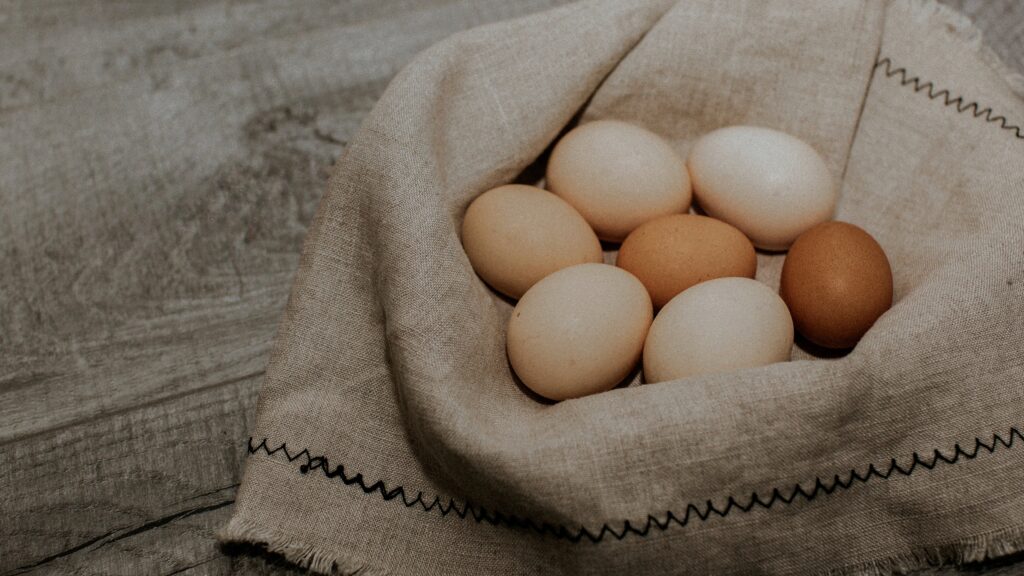
Tea Eggs, With Dragon Pearl Black Tea)
Interested in adding visual extravagance to a gathering? Then tea eggs are for you. We’ve got more good news — the eggs tantalize taste buds as well as eyes.
In China and Taiwan tea eggs are staples at food stalls and convenience stores. To make them, cooks first hard-boil eggs. Then they crack the shells lightly all around the eggs. The next step is a long steep in a marinade involving tea. After that, they are ready to eat.
Tea stands as the backbone of the marinade. Traditional preparations turn to black tea, mainly for color. Our Dragon Pearl would add lovely flavors and color. But feel free to use any tea you like, as long as it will impart color to the eggs. A light green sencha, for example, might not offer the visual impact.
RECIPE
Ingredients
- 12 large eggs
Marinade
- 6 tablespoons soy sauce
- 1 teaspoon Sichuan peppercorns
- 2 star anise
- 1 small cinnamon stick
- 2 teaspoons sugar
- 1 1/2 teaspoon salt
- 2 tablespoons Black Dragon Pearl black tea
- 2 1/2 cups water
Directions
- Mix marinade ingredients in a small pot. Cook over medium heat boil, then turn to low heat. Simmer for 10 minutes. Remove pot heat and let cool.
- To boil eggs, heat pot of water (enough to cover eggs) until boiling. Turn to low heat. Using ladle, place eggs carefully in pot.
- Boil 5 minutes for soft-boiled eggs, 7 for medium, and 10 minutes for hard-boiled.
- While cooking eggs, combine tap water and ice in large bowl.
- Once eggs are cooked, transfer to ice bath for 2 to 3 minutes.
- Gently crack eggs using the back of a spoon. The point: Ensure shells are cracked enough to permit marinade into the egg, without having the egg fall apart.
- Transfer eggs to a quart-size ziplock bag, then pour in marinade. Marinate for 24 hours for cracked “marble” eggs.
Marble eggs are delicious cold or at room temperature. Store them in the marinade in the refrigerator for up to 5 days. Over time, the eggs grow increasingly flavorful and saltier.
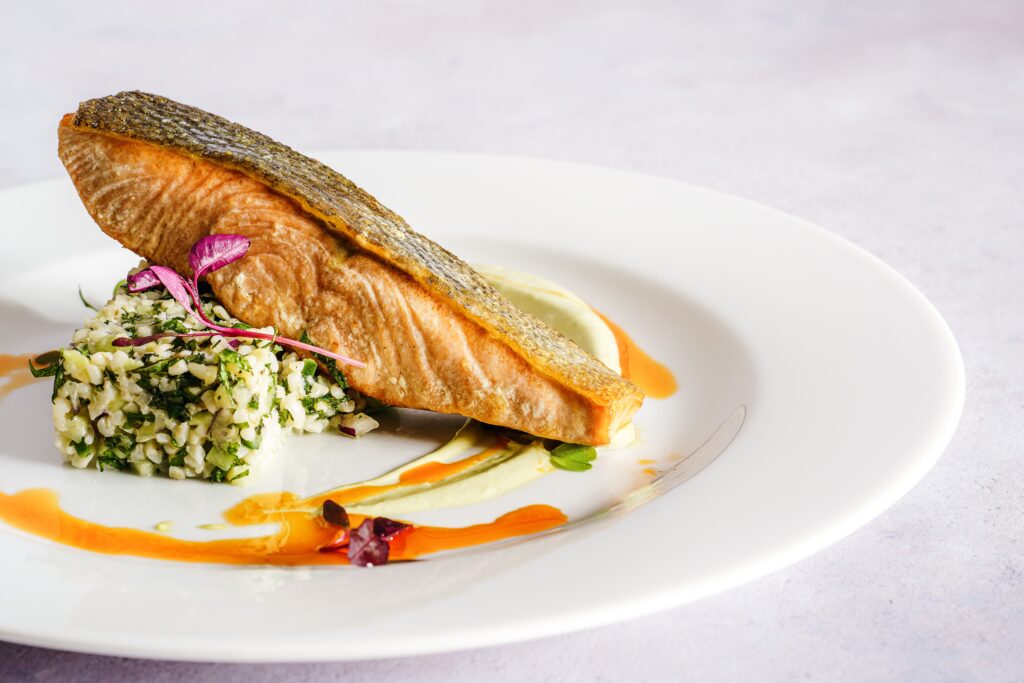
Dragon Well Superior Green Tea Marinated Salmon
Cooks use a wide range of teas to impart flavor and color to dishes. But green tea is especially popular with seafood. As things like lobster, tuna, scallops and mussels offer delicate flavors, heavily oxidized black teas threaten to overwhelm the seafood’s gorgeous and subtle flavors. But green tea’s natural herbaceousness complements seafoods.
Pairing salmon with green tea is a classic, something you might find on the menu of an ambitious restaurant. In this dish, inspired by a Food Network recipe, we combine our superb Dragon Well Superior green tea with ingredients like ginger and limes for a dish that is simultaneously delicate and powerful.
Recipe
Ingredients
- 12 cups water
- 3 limes, halved
- 8 tablespoons honey, divided
- 5-inch piece fresh ginger, peeled and chopped
- 3 teaspoons sea salt
- 2 teaspoons whole black peppercorns
- 4 to 6 tablespoons Dragon Well Superior green tea
- 4 (6-ounce) boneless skinless salmon fillets
Directions
- Put water in large pot with lid. Squeeze juice from 4 of the halves into the water, then add the rest of the limes to the water. Add 6 tablespoons of the honey, the ginger, salt and peppercorns. Bring to boil, then reduce heat to simmer. Cover the pot and continue simmering until water is highly flavored, 10-15 minutes. Remove from heat. Reserve 3/4 cup of poaching liquid. Now, add the tea. Allow it to steep for 3 to 5 minutes. Carefully place salmon poaching liquid. Cover until the fish is just cooked through and firm to the touch, about 6 to 7 minutes.
- While the fish is poaching, simmer 3/4 cup of the reserved liquid with the juice and zest from remaining limes, and add the remaining 2 tablespoons of honey. Cook until it is reduced by about 2/3, between 7 and 10 minutes.
- Remove fish with a slotted spoon. Arrange on serving plates. Drizzle sauce over each piece before serving.
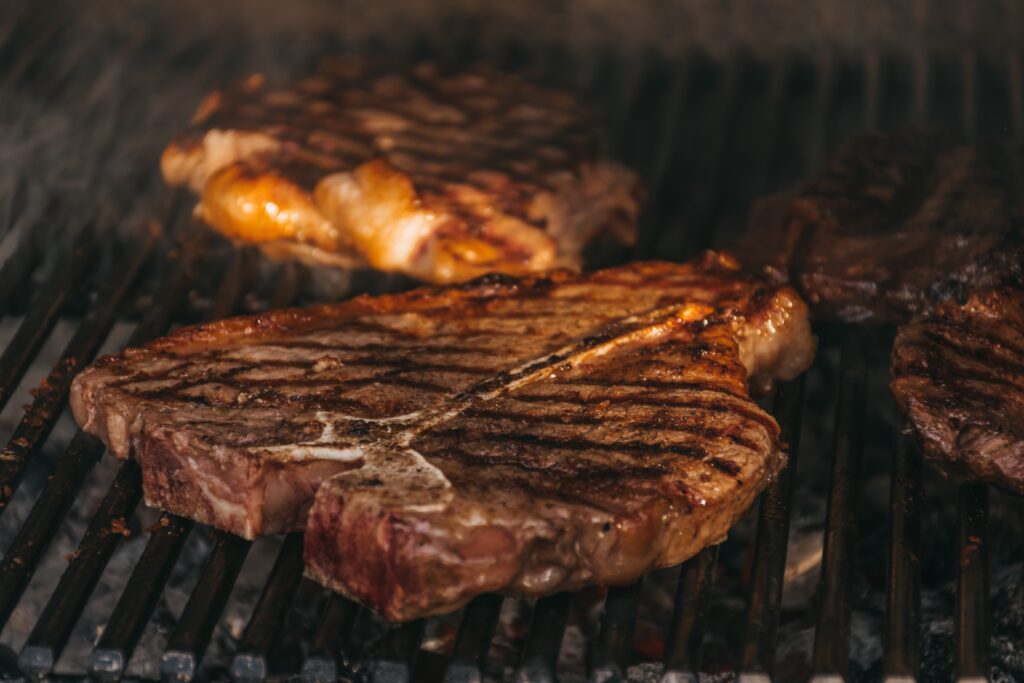
Grilled Smoky Steaks
We don’t normally smoke steaks. Instead, we rely upon tough cuts like brisket and ribs for smokers — after hours enveloped in low heat and smoke, the cuts’ tough connective tissues break down, the meat turns supple, and the smoke flavor saturates the meat. Steaks, on the other hand, just turn tough after hours on a smoker.
Our outstanding lapsang souchong to the rescue! China’s famous smoked tea imparts the flavors of smoke without requiring the union of meat and hours of wood-fired heat. This dish is simple and awesome. Cooking with tea finally gives steaks the barbecue treatment.
Recipe
Ingredients
- 2 tablespoons lapsang souchong tea
- 3/4 teaspoon salt
- 1/2 teaspoon whole black pepper
- 2 steaks, weighing about 2 1/2 pounds total. Steaks could be rib-eyes, New York Strips, flank — really, any steak you love on the grill.
- 1 tablespoon neutral cooking oil, such as sunflower or grapeseed.
Directions
Place all dry ingredients in spice grinder or mortar and pestle, and pulverize until fine-textured. Rub steaks with dry rub and let sit at room temperature for 30 minutes.
While meat is absorbing flavors, prepare a grill or grill pan. You will cook the steaks at medium-high heat. Rub steaks with oil.
Grill steaks for about five minutes on one side, then flip over for another five minutes or so. for medium-rare. Move them to a cutting board and let rest for 10 minutes. Slice and serve.
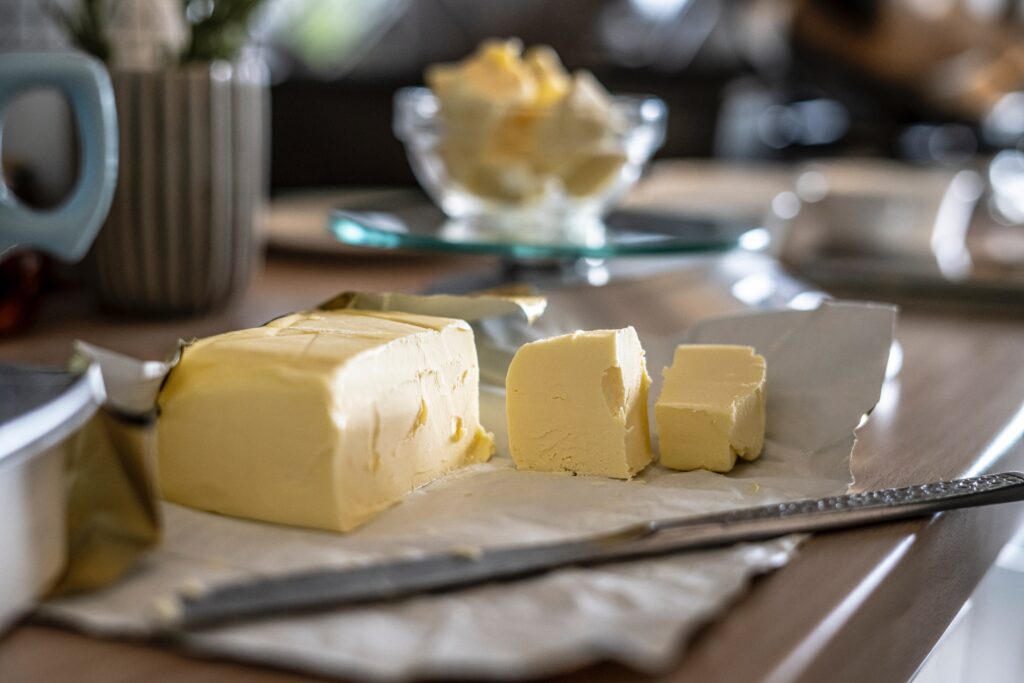
Jasmine Silver Needle Tea Butter
Chefs turn to myriad ingredients — garlic, truffles, honey, lavender, chives, anchovies and much more — to impart flavor to butter. Why butter? Its relative flavor neutrality, and its high fat content. Ingredients added to butter don’t have to compete with other flavors, as butter is not exactly electric with flavor. And the fats found in butter are like flavor sponges. As such, butter is a perfect medium for absorbing flavor.
Love Earl Grey? Smear some Earl Grey-infused butter over a piece of toast. You’re welcome. Truffle fan? Swirl pad of Butter saturated with truffle flavor into a bowl of pasta and rejoice.
This version relies on our lovely Jasmine Silver Needle white tea, a tea packed with the beautiful floral flavors of fresh jasmine blossoms. Slather this on any dish that could benefit from this combination of green tea and jasmine — toast, scones, a filet of halibut, even mashed potatoes.
Recipe
Ingredients
- 1 stick butter
- 2 teaspoons Jasmine Silver Needle tea
Directions
Over low heat in a small saucepan, melt butter until it is liquid. Add tea leaves. Keep on low heat for 5 minutes. Remove pan from heat, and let stand for another five minutes to impart more flavor and color. Pour the mixture through a sieve and into a glass or ceramic container; press on leaves to extract as much flavor as possible into the butter. Let flavored butter come to room temperature, and use like regular butter.
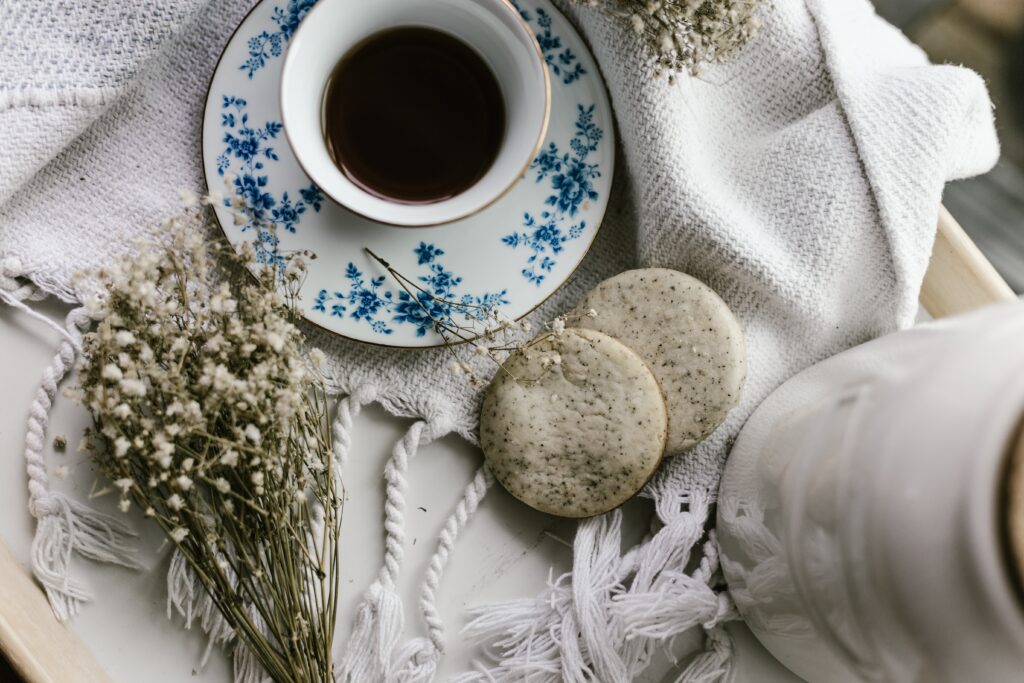
Lady Earl Grey Shortbread
While some of these recipes are somewhat novel, shortbread infused with Earl Grey tea is a classic. But here we offer a slight pivot away from the classic: our Lady Early Grey tea incorporates lavender and lemon, as well as Earl Grey’s predominate flavor, the Italian citrus fruit bergamot.
We find the combination stunning as tea. When part of a crumbly, buttery piece of shortbread it is majestic.
Recipe
Ingredients
- 1 cup unsalted butter
- 3/4 cup powdered suger
- 4 tablespoons Lady Earl Grey tea
- 1/2 teaspoon lemon zest
- 1 teaspoon pure vanilla extract
- 2 cups all-purpose flour
- 1 teaspoon salt
- 1/4 teaspoon baking powder
Directions
- Place butter and sugar in bowl of a stand mixer fitted with paddle attachment. Beat for between 3 and 4 minutes, until creamy. Then add tea, lemon zest and vanilla while mixer is still running on low, until combined. Between 30 seconds and a minute. In another bowl hand whisk together flour, salt and baking powder. Then add flour mixture, one-third at a time, to the butter blend, while mixer is running on low speed. Continue beating about 10 or 15 seconds, until smooth.
- Divide dough in half. Shape each portion into log about 7 inches long, then wrap in plastic wrap and refrigerate at least 2 hours. The cold logs can remain in the refrigerator for up to 4 days.
- Preheat oven to 350°F. Unwrap 1 log, and slice into 1/3 inch-thick slices. Space the cookies about 1/2 inch apart on a baking sheet. Bake until edges are slightly browned, between 12 and 14 minutes. Cool on a wire rack 15 minutes. Repeat process with second log.

